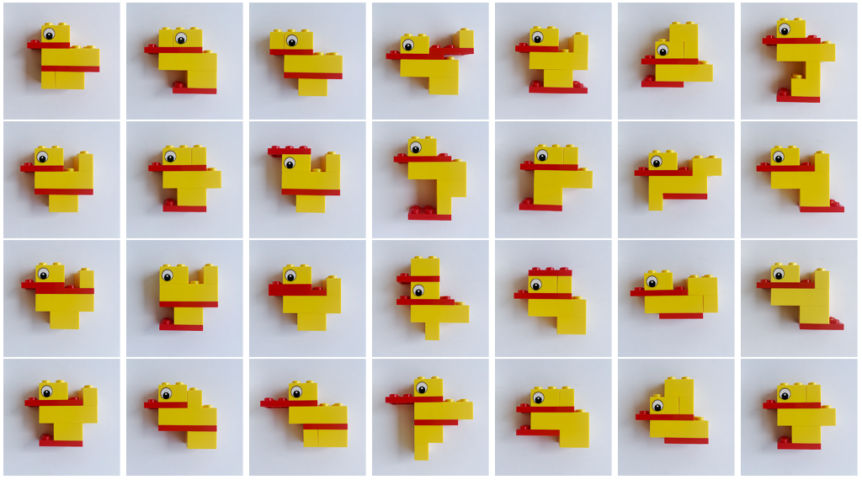On 5 September, ANU communications staff attended the inaugural ANU Communicators Network Conference – FORGE – hosted by Ed O’Daly and the very adept ACE team. In addition to providing a great opportunity for networking, attendees to the conference benefitted from the rich presentations of three speakers, who were engaged to “inspire and empower our vibrant community of communication professionals”.
Why a story? Stories inspire, help us connect
Senior strategist at True North Content, Bree Element, provided insights to her work on redefining the story of Canberra, in the keynote session From Ricky Stuart to Alex Sloan: How we got to the heart of what it means to be Canberran. Adding a local touch to the well-attended conference, Bree showed how the reframing of The Canberra Story has helped to reconfigure the narrative of the Nation’s Capital, one which is aimed at shaking off outworn clichés around “politicians and public servants, open spaces and roundabouts”.
The following are Bree’s key takeaways on how to develop a potent and authentic story for a promotional campaign:
- Define your audience – who is the story for?
- Hold many conversations, listen closely, seek common threads – how can we gather qualitative survey data?
- Distil the content of these conversations to find common themes and establish a set of values – what threads are key to your message?
- Keep talking about and promoting the value of having a cohesive story – how can you convince people to use your story?
- Present your story as a digital tool kit – think about creative, compelling ways in which to present the story, such as by incorporating imagery and well-crafted words which outline the essential elements of your message and values.
Download The Canberra Story (opens a pdf) and learn how a story can become “a touchstone for decisions, a guide for starting something new.”
How do you build a yellow and red duck?
Providing a complementary angle in the Masterclass – Beyond counting metrics, to objective driven measurement session, the conference’s second speaker, Victor Zalakos, from SCMP, discussed the importance of gathering quality analytics.
Commencing the session with a quick Lego activity, Victor was able to demonstrate the many perspectives diverse individuals bring to the table by inviting attendees to build a duck out of six Lego pieces. The exercise illustrated image retrieval (what does a duck look like?), symbolic representation (how do I translate the shape of a duck out of squares?), rapid ideation and prototyping (brain storming and out-of-the-box thinking) and executive functioning and resilience (how to get things done even if you meet with challenges) at work amongst the attendees who took on the challenge.
For the remainder of the session, Victor covered strategies for measuring the impacts of external and internal communications, impressing the importance of:
- setting meaningful, measurable objectives that create value and that are well-communicated. For instance, avoid the tendency of addressing easy-to-measure things rather than developing a strategy for measuring outcomes which are more relevant to business needs.
- distinguishing between output (what you do) and objectives (what does success look like) when developing a campaign. For instance, output-based objectives produce quantity-based analytics; outcome-based objectives are smart objectives as they are “specific, measurable, achievable, relevant and time-framed”.
- getting to know your audience, for a more effective communication strategy. For instance, learn about your audience’s preferences, attitudes, opinions, motivations and relevant issues.
- identifying how you will reach your goals (objectives) as well as your methods of delivery (tactics).
Questions, questions, and more questions
The third and final speaker, Matt Liddy, editor of the ABC News Story Lab, presented the inspiring session Telling digital stories that stick. Taking us from the long-forgotten search engine Altavista and look of early digital news coverage from the 1990s, to the ABC’s incorporation of AI today, Matt demonstrated his expertise sharing tips on how to use today’s digital tools to address timeless questions, such as “How can I help people better understand themselves and the world around them?” Drawing on the benefits of data visualisation, quality research and insights on how to conduct cross-disciplinary journalism in the digital era, Matt stressed the importance of asking questions, and of not just providing answers to your audience.
Questions Matt reflected upon include:
- How can you help your audience understand themselves and the people around them? (ie by helping people make sense of information)
- How can you make your audience interested in the stories and information you present? (ie by using catchy headlines, images and AV)
- Are you delivering on your promises? (ie does the headline match the story)
- How do you want your story or information to make your audience feel? (ie the emotion versus the facts)
- Can you show and tell? (ie the importance of framing and putting things into context) How can you best reach your audience and present information in different ways?
- How can you be useful to your audience’s work (ie what does your audience want to learn about)?
- Are you speaking your audience’s language and are you respecting their time? How can you get your audience involved?
Explore the interactive stories on the ABC News Story Lab. Reflecting on the notion of “the map is not the territory”, take a look at the past story The Australian election map has been lying to you, for inspiration on how to integrate innovative research and expertly wield data visualisation and “scrollytelling” (scroll + storytelling) – which can also be applied in the education context – to get your message across.
September 2023
Melita Dahl, Communications Coordinator, Centre for Learning and Teaching

